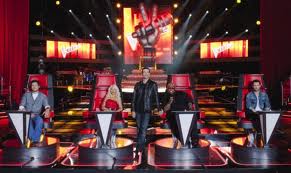 My kids have already put “The Voice” on DVR pre-record mode. They are hooked and I may be getting there too. American Idol never did a thing for me. So what is going on?
My kids have already put “The Voice” on DVR pre-record mode. They are hooked and I may be getting there too. American Idol never did a thing for me. So what is going on?
Despite the incredibly tacky design and fight-ring theme, the blind auditions, star studded feedback (they vote with their hands, not their feet!) and team building competition makes for compelling intrigue. I love the blind audition element because it demonstrates how affected we all are by how people look. We are thinking, “Wow, this is one crazy looking woman!” or “This guy looks like a 12 year old white kid from the Midwest but he sure sounds like a mature black R&B star!” But, since the celebrity judges can’t see the singers, they have to listen with their ears and hearts. And who doesn’t love the look of surprise, delight, and amazement when the stars slam their buzzer, swivel their (tacky!) chairs around and get to see the singer they just voted for! It’s so satisfying to watch their curiosity get piqued. It’s awesome. And fair.
In his book BLINK , Malcolm Gladwell describes the process that orchestras throughout the world faced in the mid 20th century, as auditioners began to fight the bias of conductors for white male players. Screens were being used to avoid potential nepotism. Since “naturally” some instruments are “male” and should be played only by a man, judges were stunned when faced with a petite woman “blowing the house” out of her “male” trombone instrument. There was a lot of pushback. Nonetheless since orchestras began using screens, “the number of women in the top US orchestras has increased five-fold.” We listen with our eyes, whether we want to admit it or not.
For speakers this underscores the importance of recognizing how critical our physical movement and presence is to our audience. For singers on The Voice, it means (at least in the first round) freedom.
-Charlotte

